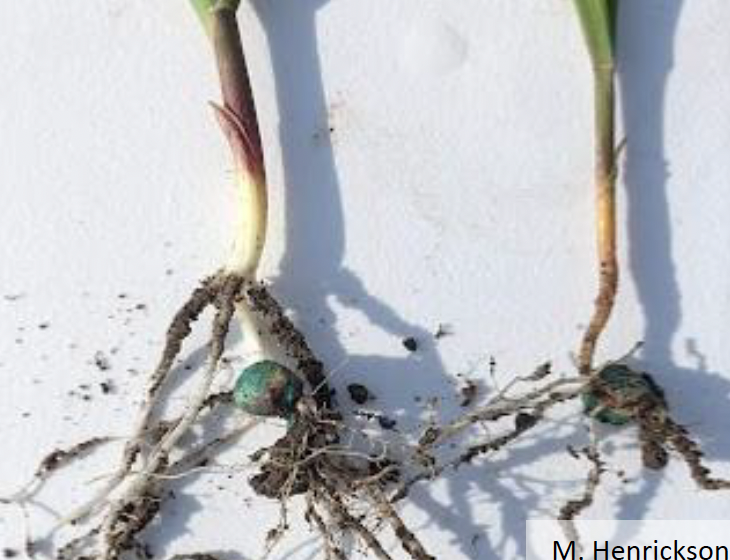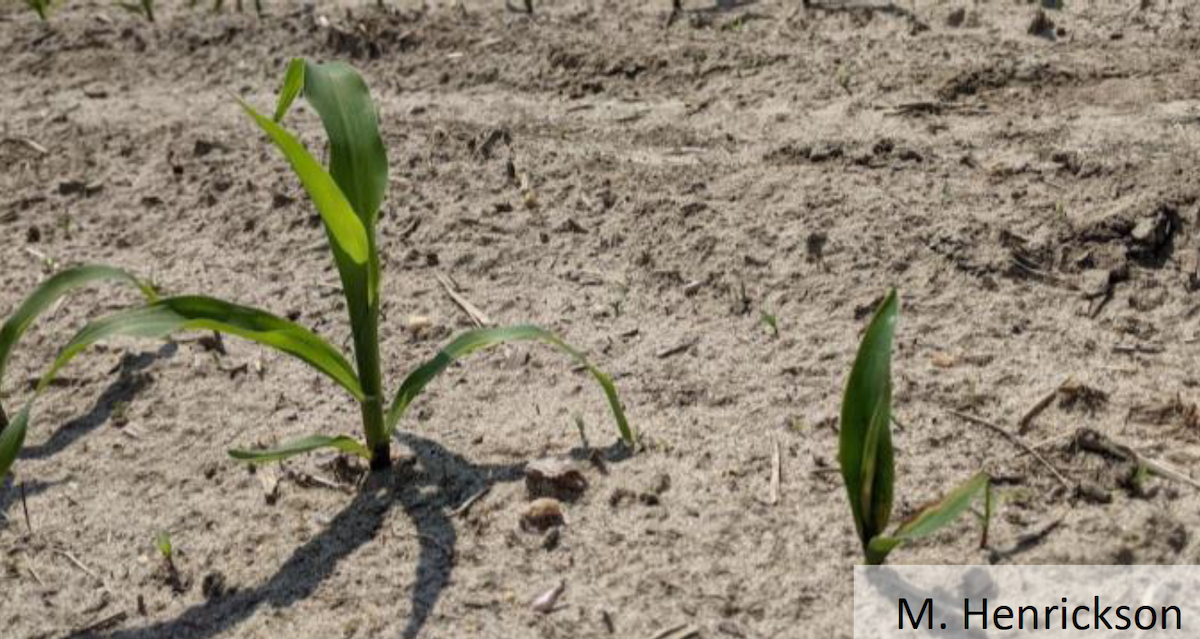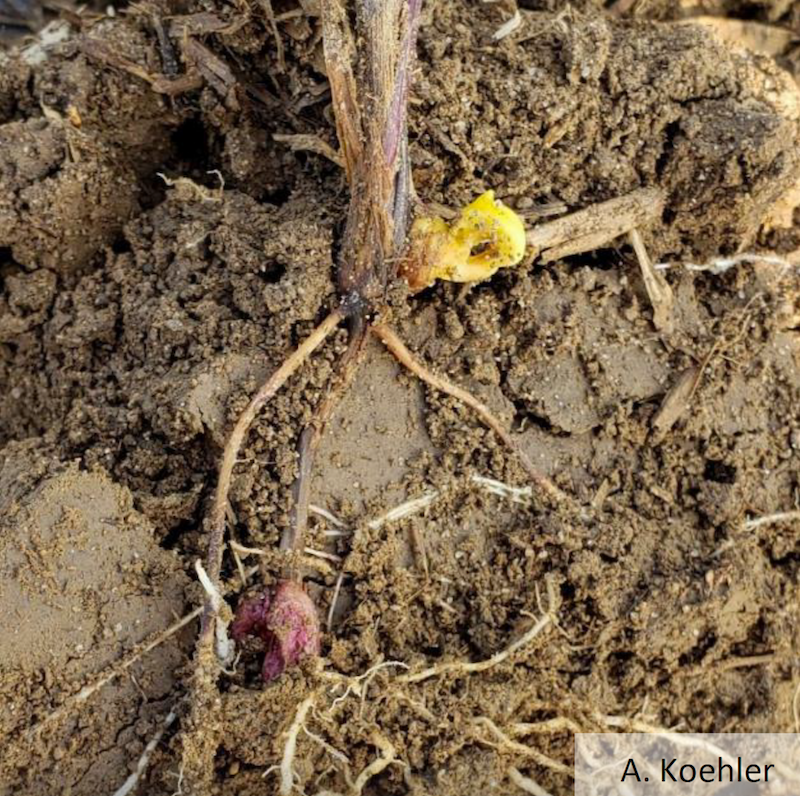
Fact Sheets And Publications
Pythium Root Rot
Pest Background
- Caused by many species of the oomycete pathogen Pythium.
- Pythiumspecies are favored by periods of extended soil wetness.
- Pythiumspecies differ in optimal temperatures for growth and can have varying responses to fungicides.
- To date, over 15 species have been identified in the Mid-Atlantic region, withPythium graminicolabeing most common.
Identification
- Symptoms of Pythium Root Rot can include stunted, slower growing plants, to severely infected, dead plants that die after emergence (Fig 2).
- Infected plants typically have brown, rotted roots and mesocotyl (Fig 1and 3).
- Stand reduction is typically seen in low-lying, wet regions of the field.
- Plants that are infected early generally maintain reduced root systems throughout the season, with poorly formed ears.

Fig 1: Comparison of corn hypocotyls healthy
(left) vs infected (right)

Fig 2: Aboveground symptoms of infection by
Pythium (right)

Fig 3 : Developing corn root system infected by Pythium
Management
- Seed treatments with activity against oomycetes can provide protection for approximately 14 -21 days.
- Limit water usage early in the season to avoid saturated field conditions.
References
Bickel, J. T., & Koehler, A. M. (2021). Review of pythium species causing damping-off in corn.Plant Health Progress,22(3), 219-225. doi:10.1094/PHP-02-21-0046-FI
Authors: Madeline Henrickson and Dr. Alyssa Koehler
UD Cooperative Extension
This institution is an equal opportunity provider.
In accordance with Federal law and U.S. Department of Agriculture policy, Cooperative Extension is prohibited from discriminating on the basis of race, color, national origin, sex, age, or disability.
